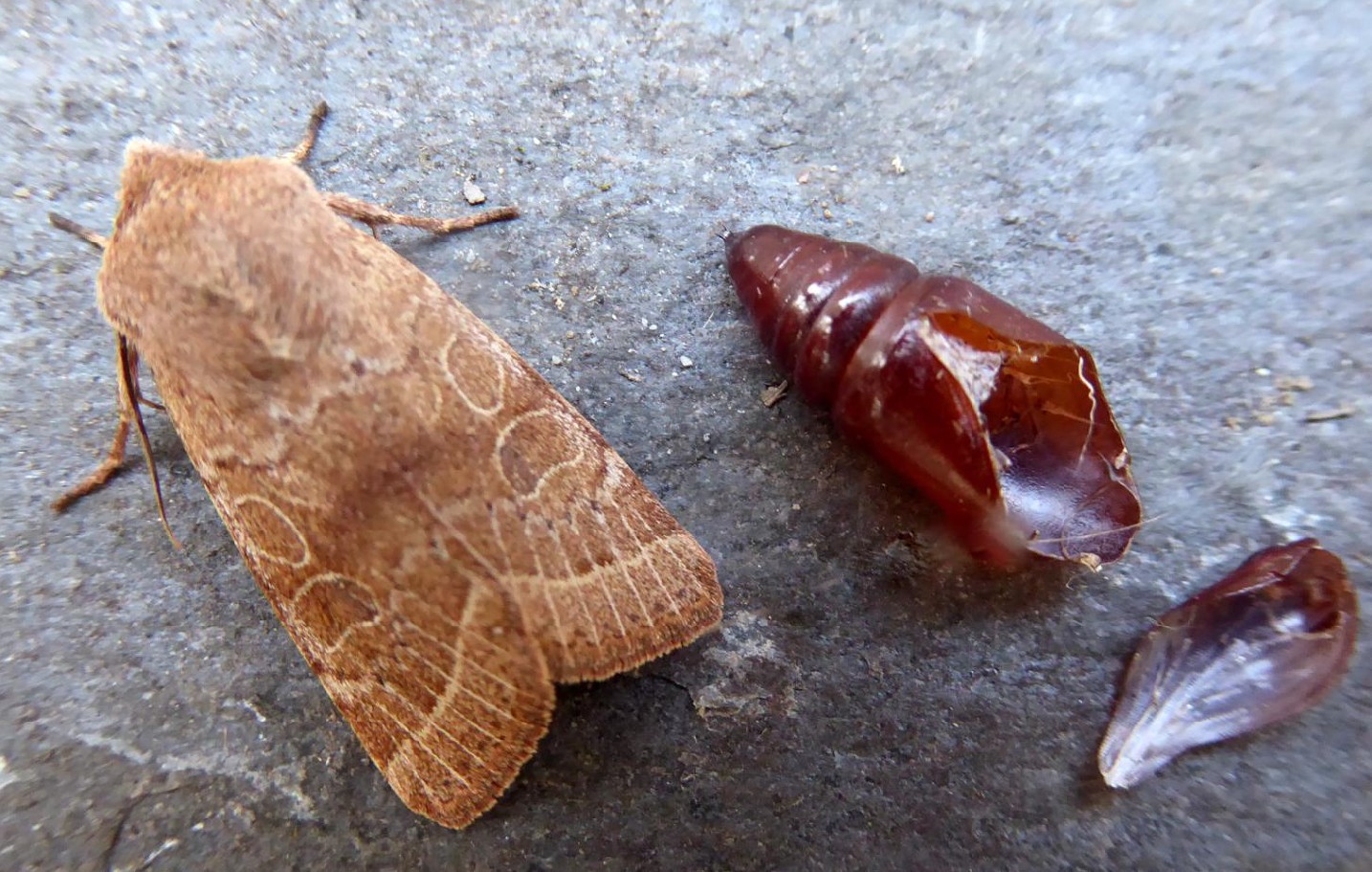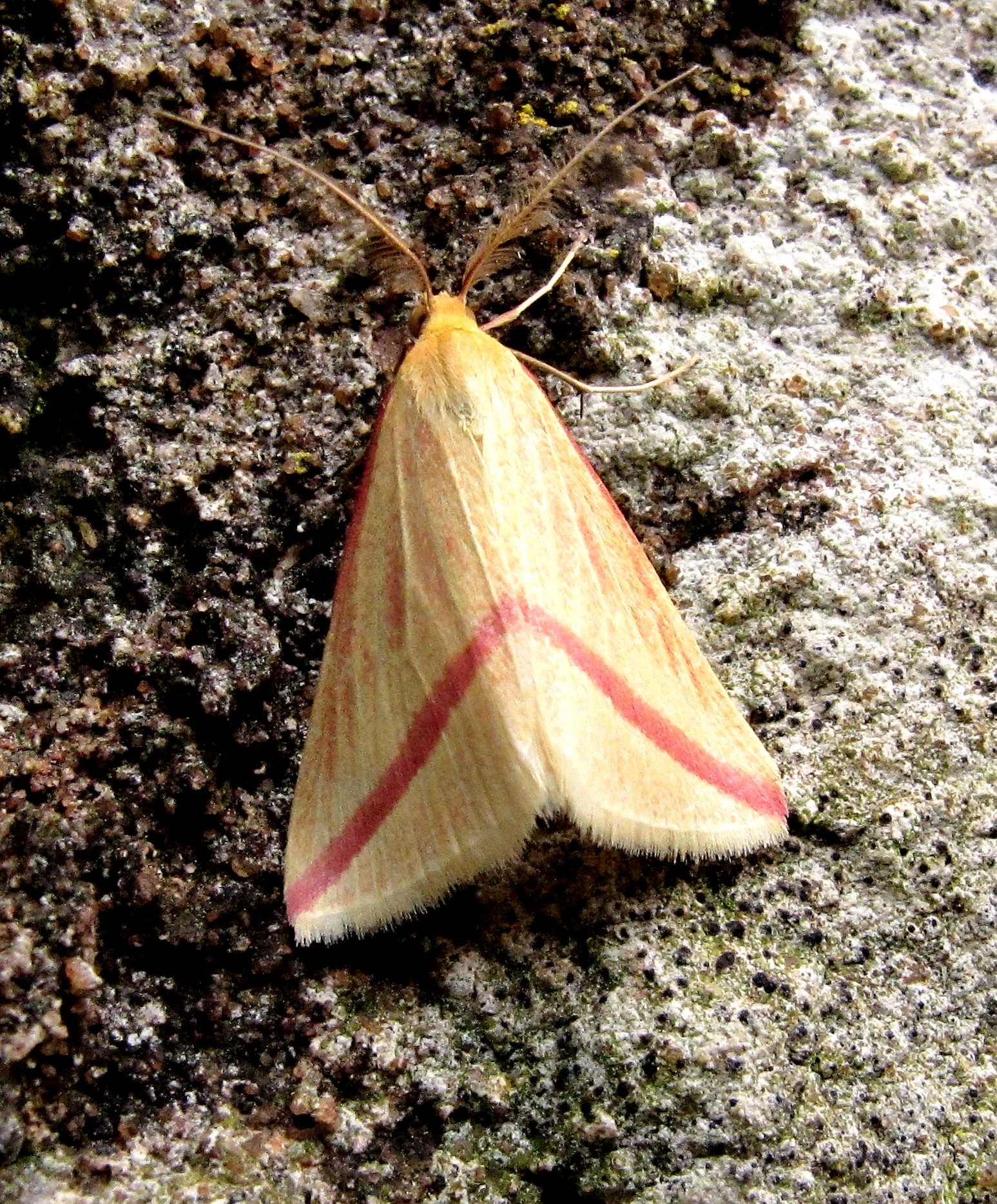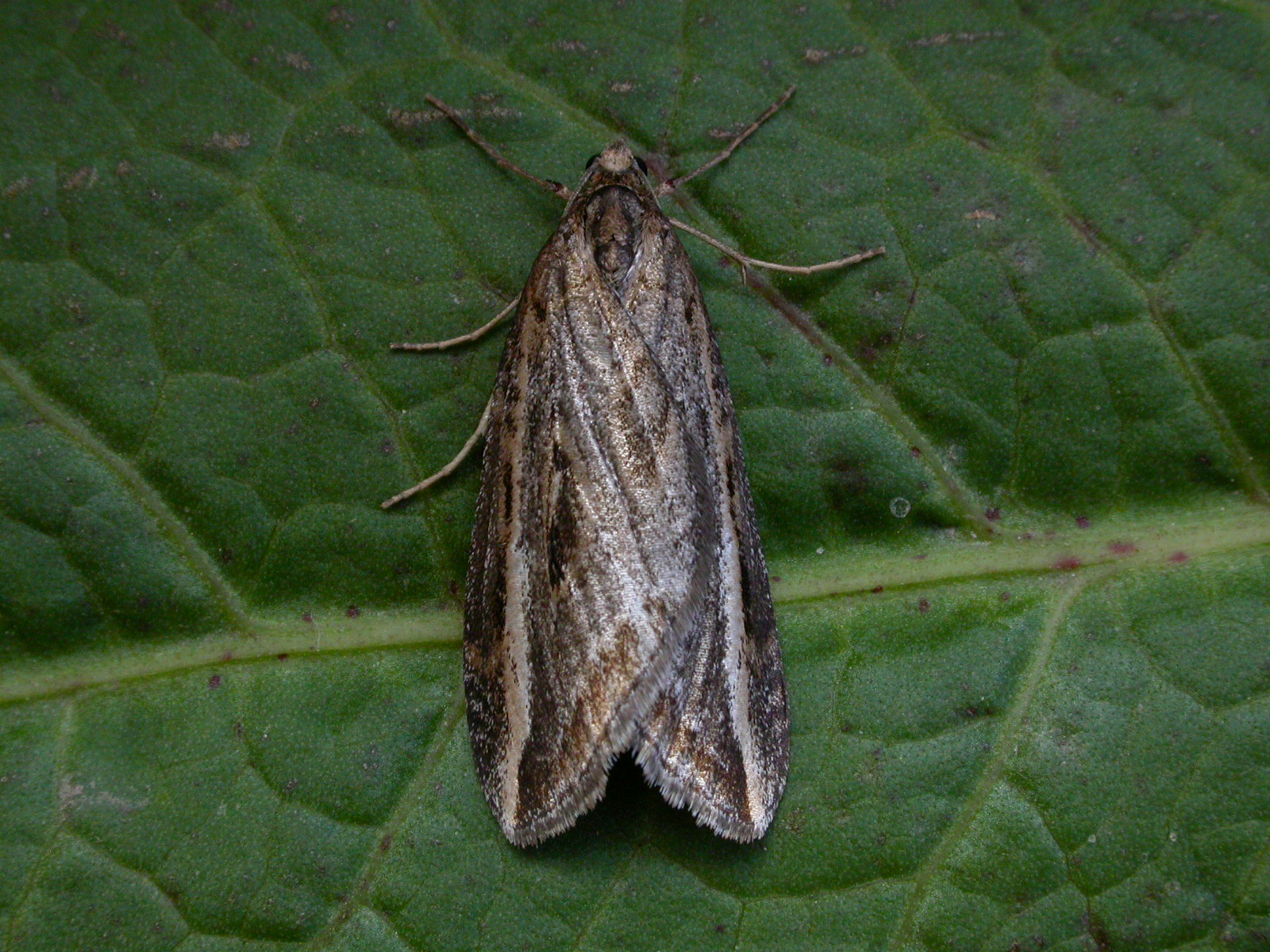This must be one moth that everyone knows! As the moth traps come out again, after a long winter’s hibernation, almost any night at this time of year will produce a Common Quaker (and, of course, a Hebrew Character or two). This species is relatively easy to identify with its large, pale-edged oval and kidney marks on the wings.
Although there is some variation in the colour and in the distinctiveness of the markings most individuals can be recognised in and amongst the other 7 members of the Orthosia genus which are all spring flying species (such as the very common Clouded Drab, Small Quaker and Hebrew Character). The Common Quaker can emerge in February but really gets going in April reaching its peak of abundance in the third week. The moth is seen through to the beginning of June with the occasional record from July (and from the autumn months).
There are about 1,500 records for D&G (half the number of the Hebrew Character which was MotW last year in May) from throughout our area as well as throughout Scotland excluding the Hebrides and Shetland.
This is a moth of lowland woodland and scrub with the adult readily feeding on sallow blossom and laying its eggs on almost any tree or shrub including oak, birch, sallow, hawthorn and blackthorn. The young caterpillars initially feed on the opening buds then make daytime refuges from leaves spun together. The fully grown caterpillar lives in the open and id bright green with a paler head, white longitudinal lines and densely speckled with yellowy-white markings. The eleventh segment of the body has a characteristic transverse yellow line. The caterpillar burrows into the soil and pupates in a cocoon in the soil. The photo above shows the chrysalis that this moth has just hatched from, a reminder of the fantastic metamorphosis of the caterpillar into the adult moth by the rearrangement of its tissues within the pupa.
This very familiar moth is a marker of spring and as its numbers decline both the numbers of individual moths and particularly the number of different species will be sharply increasing as summer approaches. This is a lovely moth which is, quite clearly, a very successful species – in its own modest way.




